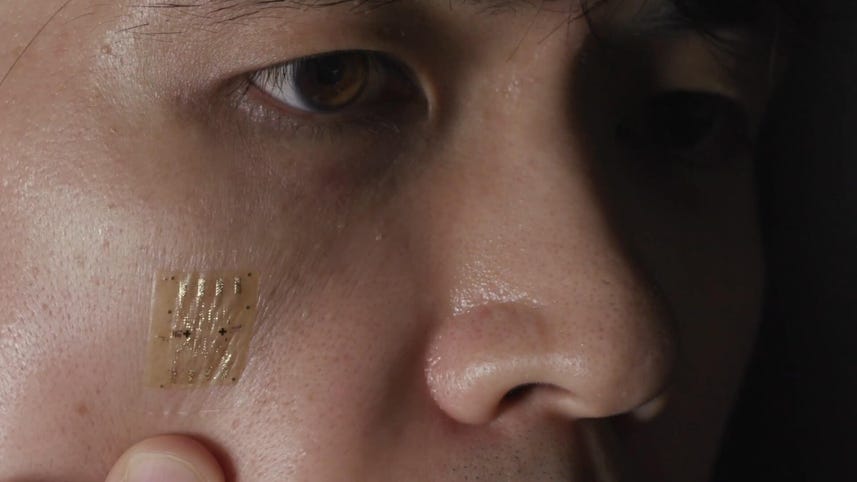
Have you ever noticed how all of our electronics are rigid, even foldable phones or just rigid electronics with a hinge?
Well, that might not be the case much longer.
Researchers at MIT have developed a new method for making truly flexible electronic components that could change everything.
Seriously.
Everything Now, holding cell phones smartphones.
This will take us to the next level where it will become integrated anywhere in your eye in your clothes and your shoes in your body
To understand this new technique which researchers are calling the peeling stack method We've got to look beneath the protective outer shells of our electronics to the chips inside.
The reason computer chips are inflexible today is that they're traditionally made on a rigid underlying layer known as a substrate.
The functional part of the computer chip, the part that does the actual computing that makes our electronics work.
It just a few hundred nanometers at the surface, there just hasn't been a good way to separate the rigid substrate layer from the thin active layer on top, until now.
A simple analogy would be you fry an egg on the frying pan but then they're trying to sell the egg and frying pan together with you.
So the cost becomes really expensive, right?
Here we basically created the oil between the egg and the frying pan.
Which is graphene for us.
If graphene sounds familiar to you, it's probably because it's been widely touted as a wonder material for the past several years.
One layer of graphene is a single layer of carbon atoms bonded together and also happens to be one of the world's strongest materials, which makes it perfect for the peeling stick So the substrate is heated to a high temperature and then the atoms are flown either in a gaseous state, or sometimes we use a plasma.
So it's a very intensive high energy process.
And since scrapping so strong, it's such a robust material, it can kinda survive that kinda harsh part, which makes this process sort of universal.
Researchers say this new technique allows them to make thin flexible layers of any functional material, and that these flexible layers can be stacked on top of each other and combined to create more complex multifunctional devices.
In the short term, an easy application will be integrating these devices into, for example, your contact lenses But this also can be integrated into your skin because it's so thin.
So now instead of having to carry your smartphone, you can have your smartphone in your skin.
This feels like the beginning of what could potentially be a whole new category of electronic devices that go beyond wearables.
It sounds like this group of researchers at MIT are just getting started in the long term.
I think it'll be flowing in your body because it'll be so thin and non invasive.
You could actually potentially create devices where it flows through your body.
It maybe attacks x Certain viruses, cancer cells.
Right now we are busy actually applying this technology to create actual devices.
One of my colleagues is creating a skin patch where it monitors your health.
One of my colleagues is also working on deep link stimulation.
Where he's probing back to the brain while simultaneously kind of controlling the activity of the brain.
And this is only possible because you can now kind of stack them together and integrate these various devices into one stack.
Thanks so much for watching what the fam See you next time.
[MUSIC]